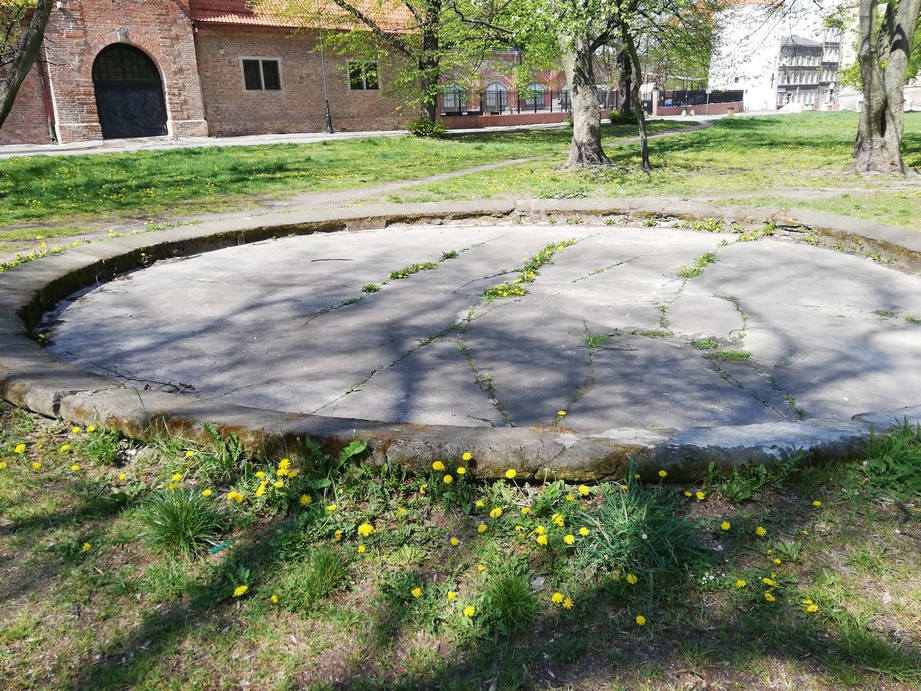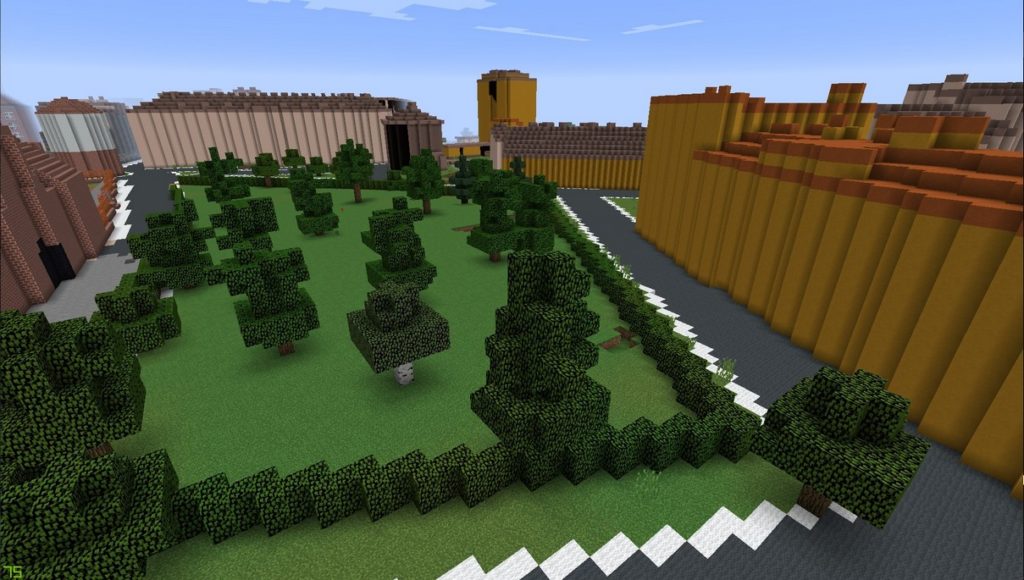- The former name of Embankment Square (Plac Wałowy) was Drill Square as soldiers used to exercise their drills there.
- When the square was used as an ammunition storage yard, it was called the Cannonball Garden.
- In front of the barracks building at Embankment Square, a monument of the 4th Regiment of Danzig Grenadiers was situated. It had been erected to commemorate Prussian soldiers who died at war. The monument was usually the background of group photographs featuring soldiers stationed at the barracks.
- In 1948, an article was published in Dziennik Bałtycki (a daily newspaper) in which an appalled reader demanded demolition of the monument. The reader believed that the monument had to be demolished because there were German surnames on it.
- Marian Pelczar, a historian, contributed his opinion to the public discussion, stating that there were Polish surnames on the monument too.
- After the war, the monument was still there for several years and then it was eventually demolished.
- When Embankment Square ceased to be a military area, it was converted into a city park. Flowers were planted and park benches were put there.
- In the middle of the square, there was a round area with a fountain. Today it is still possible to see its stone base.
- At present, Embankment Square is a park area which is going to be revitalised in 2021. A representational fountain is going to be its central point again.
Memories and stories told by the inhabitants
- Some portraits of those who lived here at the beginning of the 20th have survived to our times. They were taken at photo studios located at Poggenpfuhl St. (Żabi Kruk) or Fleischergasse St. (Rzeźnicka). These studios had been operated since the end of the 19th century. The photographs feature portraits of people who might have lived at Embankment Square. We can assume so because the photo studios at Żabi Kruk St. and Rzeźnicka St. were the closest places where such portraits could be made. These are different photographs: family pictures, children’s portraits. Some of them present specific objects from the past, for example, characteristic prams. At the back of some photographs, elegant business cards were placed by the photographers, including photo studio addresses and some additional information, such as: entrance at the backyard, second floor, glass plates (picture negatives) available here.
- Before the war, there was Schneider’s Circus located at Embankment Square. Animals used to be kept there and the inhabitants could come and see them. The circus tent was situated between the buildings of the present Province Office and the trackway.
- After the war, Gdańsk and Gdynia were connected with a shuttle bus line. The inhabitants of Embankment square used to call a big bus “the dragon”. There was a bus station in the vicinity of the present Province Office buildings.
- At Toruńska St. Dagoma plant was located. It used to produce vinegar and mustard. The plant was situated very close to Embankment Square so a lot of its inhabitants found employment there.
- At Ułańska St. a tin packaging plant (referred to as Blaszanka) was located. Dagoma and Blaszanka were handled by the same railway line, which was situated very close to Embankment Square. Some inhabitants can still remember loud train signals which used to wake them up early in the mornings.
- Embankment Square was a place where sparring fights organised by the Jaskółcza St Boxing Club used to take place.
- After the war, inhabitants of Embankment Square used to go to Foto Słońce, Adolf Fidyk’s photo studio located at Rzeźnicka St. The studio was arranged in a darkened room in the photographer’s flat.
- Inhabitants of Embankment Square used to do their hair at Roman Szypowicz’s hairdressing studio, which looked like taken from a pre-war movie: pre-war equipment – scissors, brushes, razors and a long leather belt for sharpening them, snow-white aprons, perfumed water pump dispensers. Mirrors glittered and everything smelled of perfume.
Contemporary photographs
⯆ The stone base of a fountain located at Embankment Square.

⯆ Embankment Square is full of greenery and old trees.

Archive photographs
⯆ A post-war photograph of a monument located at Embankment Square.

⯆ A postcard featuring a fountain located at Embankment Square.

Minecraft: visualisation

